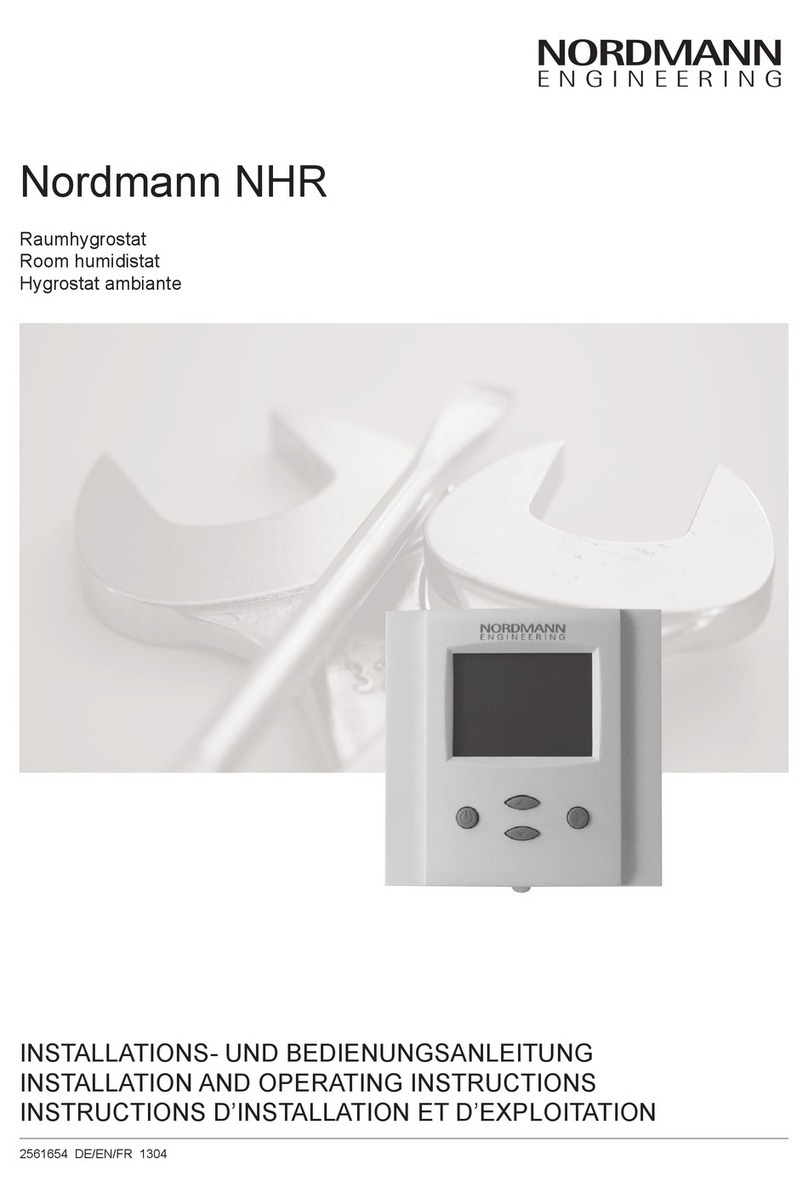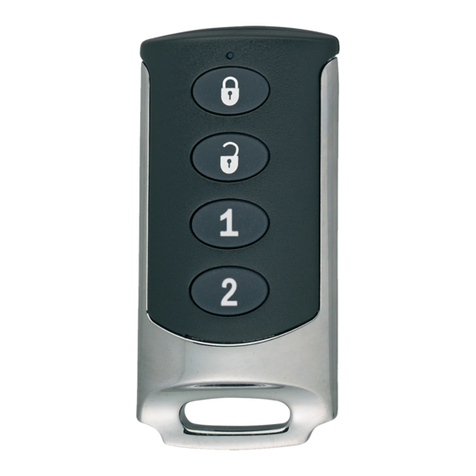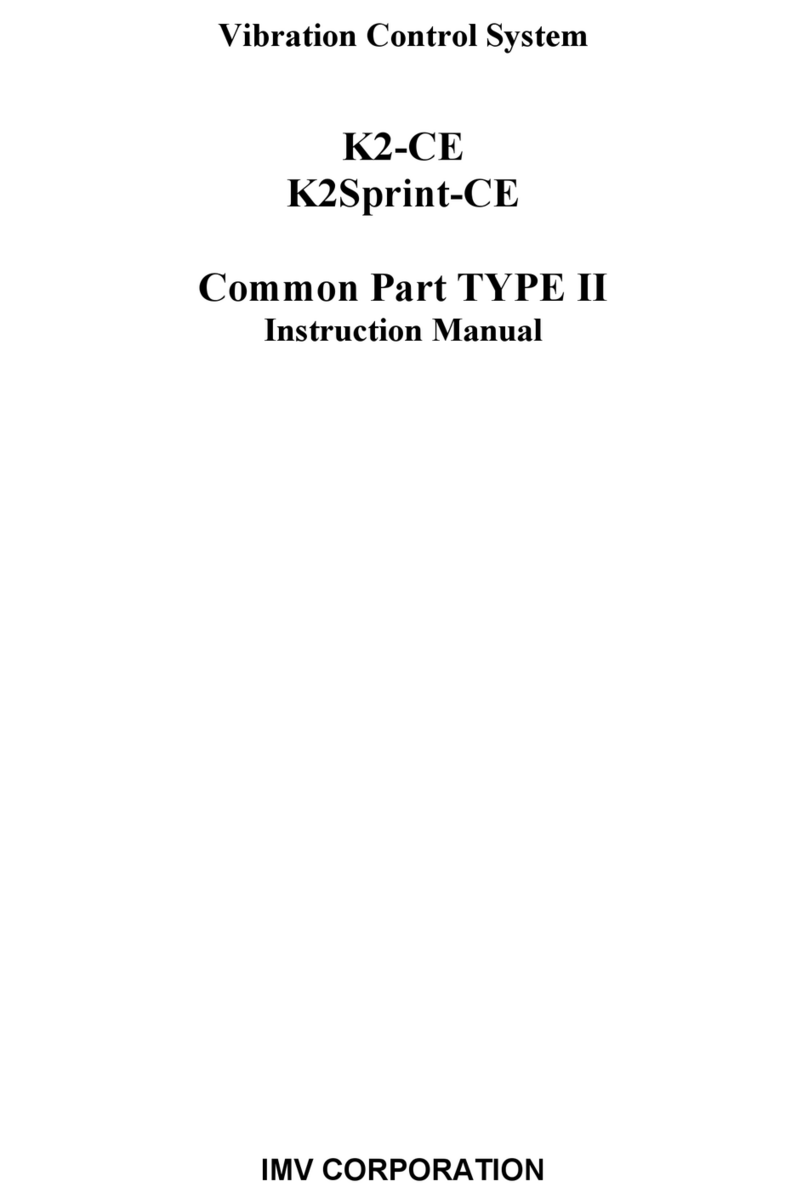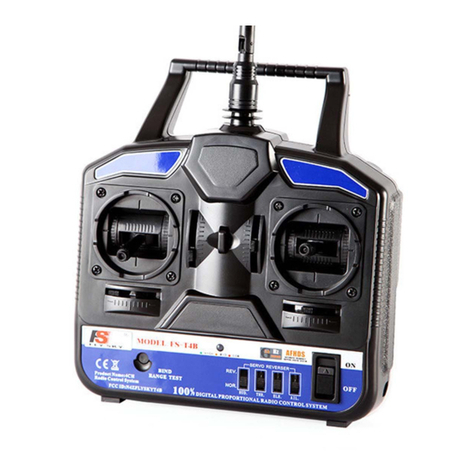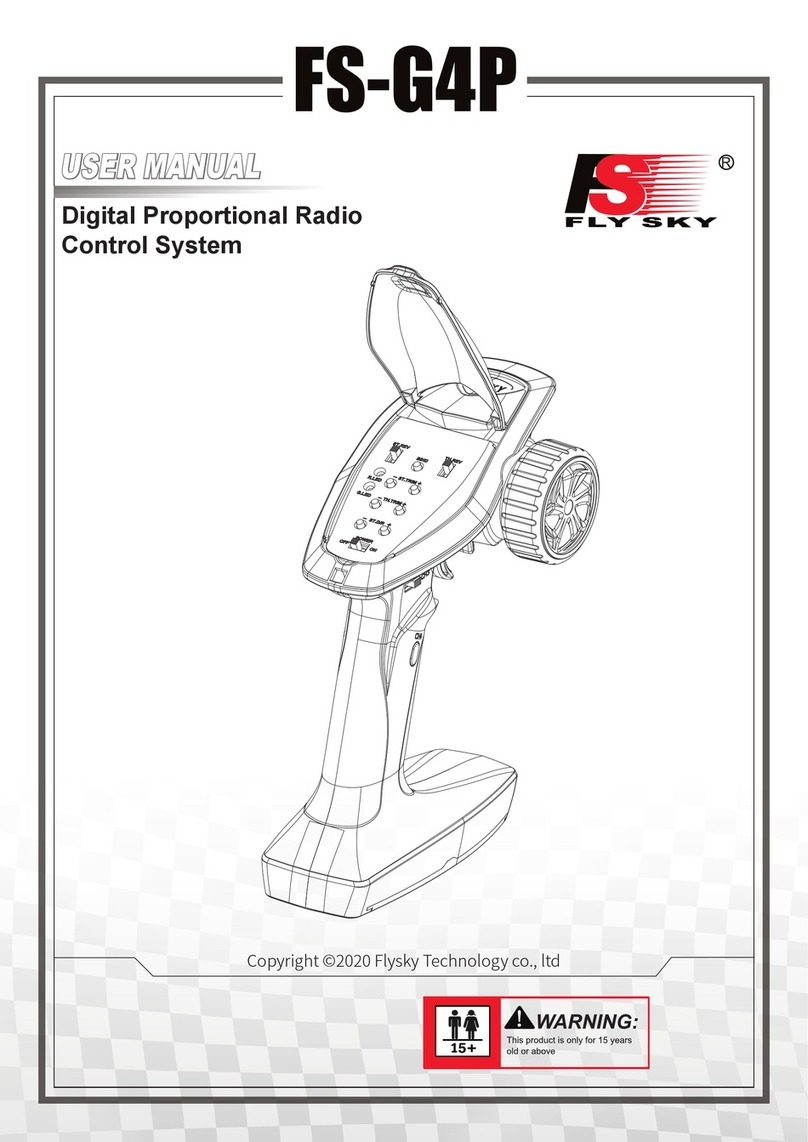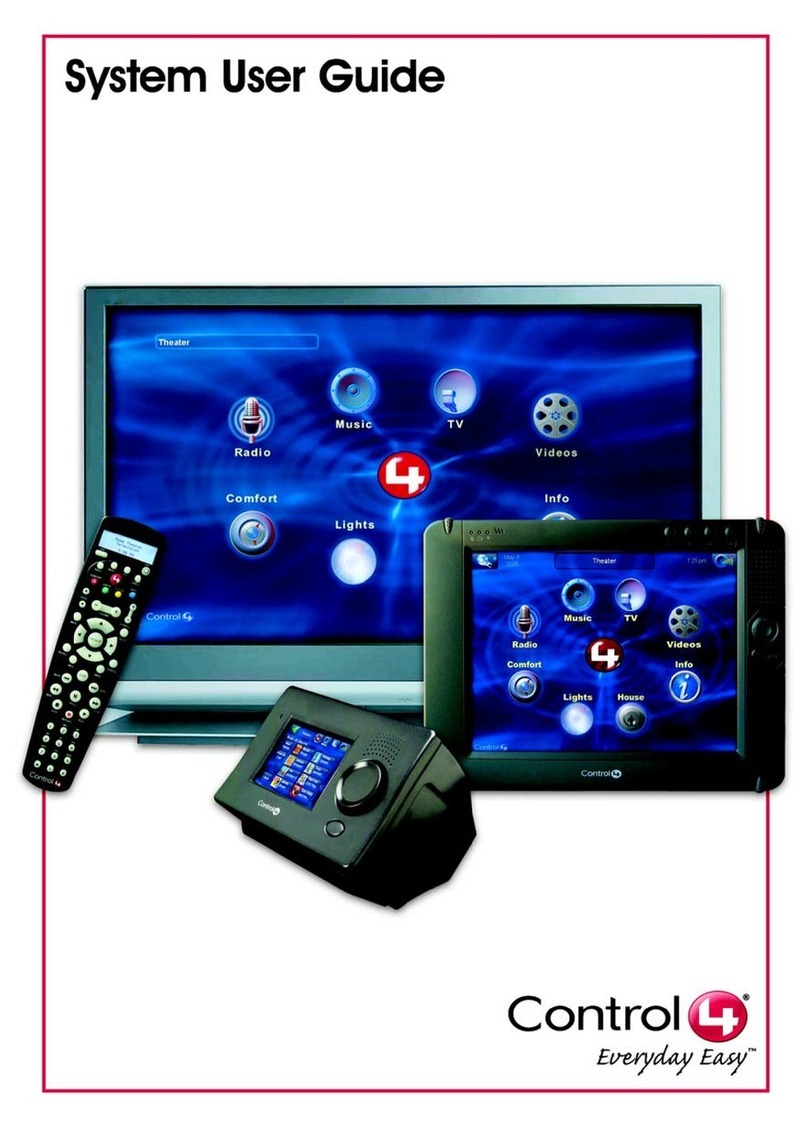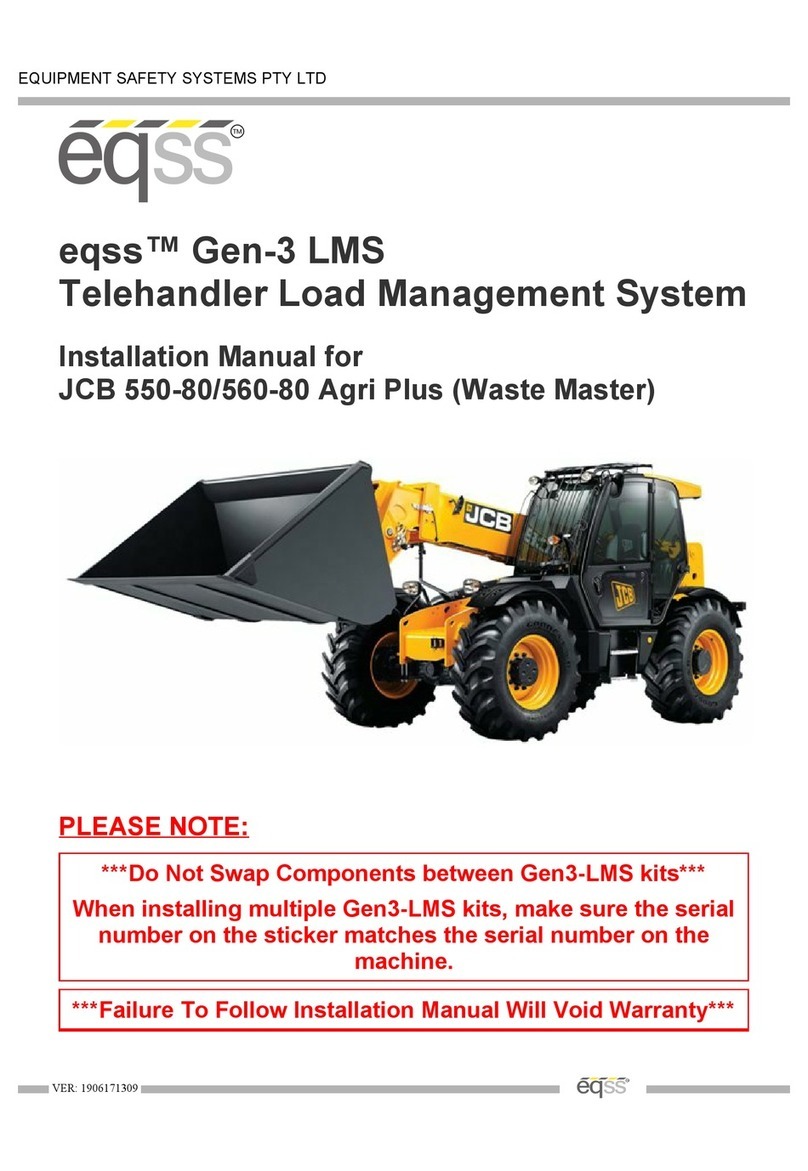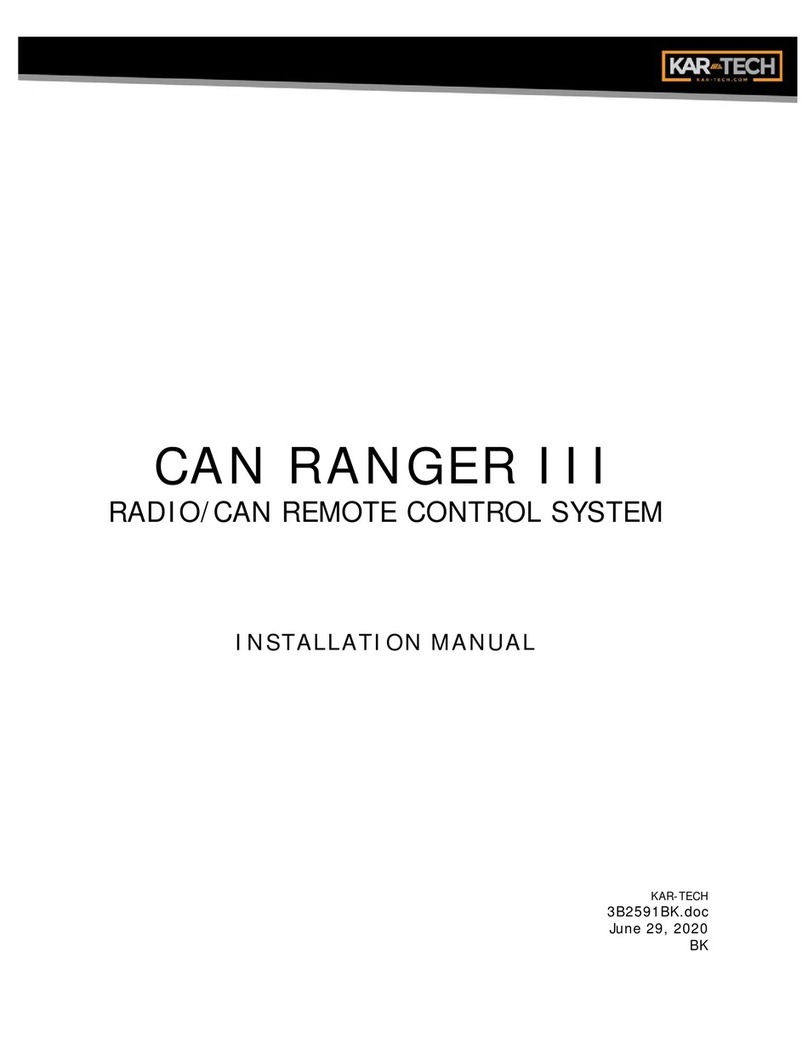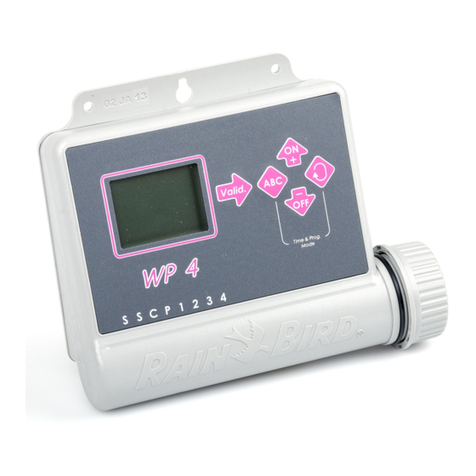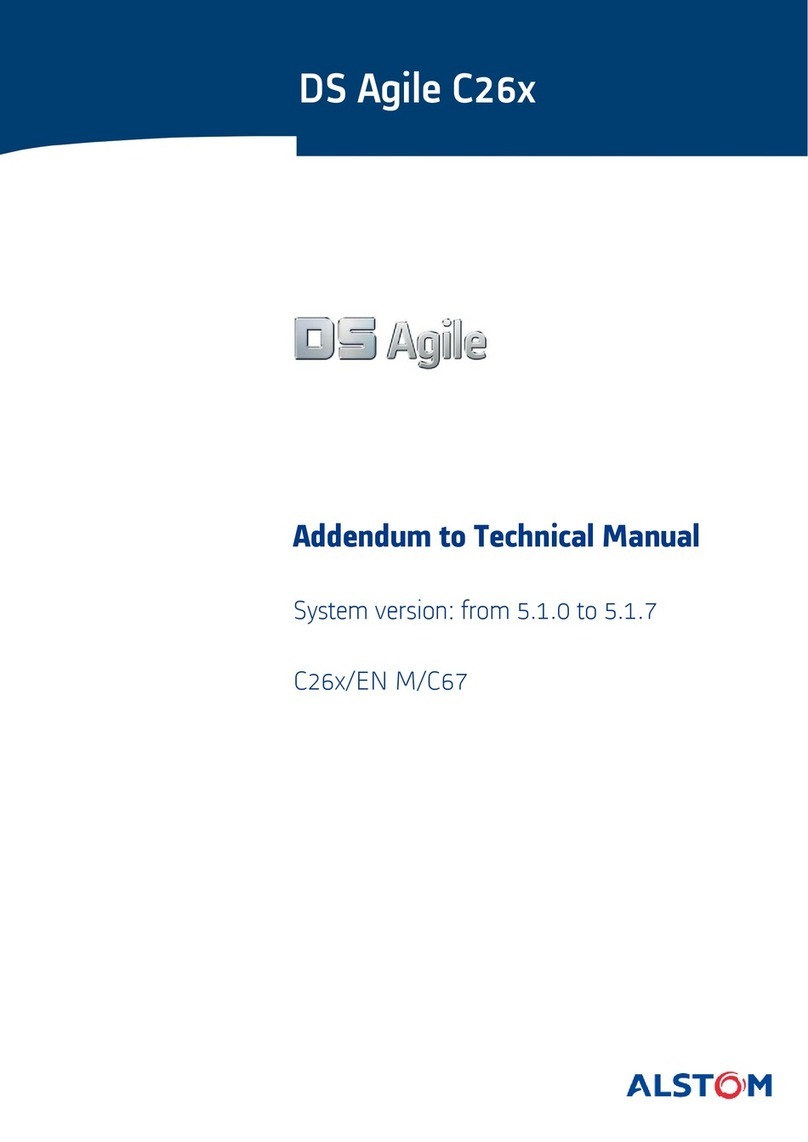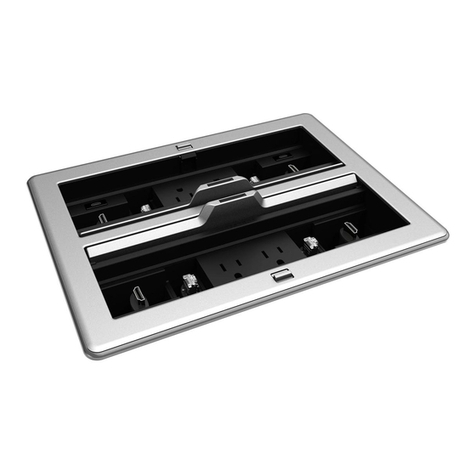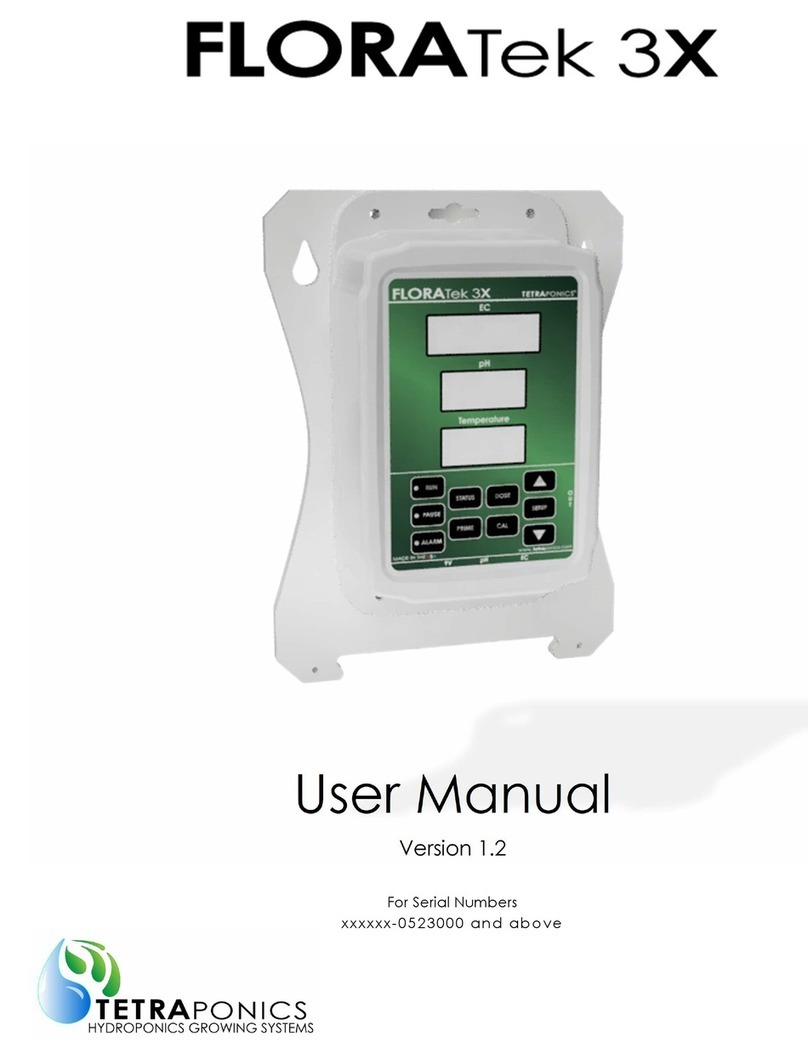SEW-Eurodrive IPOS plus User manual

Drive Technology \ Drive Automation \ System Integration \ Services
Manual
IPOS
plus®
Positioning and Sequence Control System
Edition 11/2009 11645415 / EN

SEW-EURODRIVE—Driving the world

Manual – IPOSplus® 3
Contents
Contents
1 General Information .......................................................................................... 14
1.1 Structure of the safety notes ..................................................................... 14
1.2 Liability for defects .................................................................................... 15
1.3 Exclusion of liability................................................................................... 15
1.4 Copyright................................................................................................... 15
2 Safety Notes ...................................................................................................... 16
2.1 General information .................................................................................. 16
2.2 Designated use ......................................................................................... 17
2.3 Target group ............................................................................................. 17
2.4 Programming errors .................................................................................. 17
3 System Description........................................................................................... 18
3.1 Introduction ............................................................................................... 18
3.1.1 Scope of this documentation ..................................................... 18
3.1.2 Creating programs..................................................................... 19
3.2 IPOSplus® – features ................................................................................. 19
3.3 Controlling IPOSplus® units ....................................................................... 22
3.3.1 Active control signal source ....................................................... 22
3.4 Technology options / application modules ................................................ 22
3.4.1 Technology options.................................................................... 22
3.4.2 Application modules................................................................... 23
3.5 Technical data........................................................................................... 25
3.5.1 MOVIDRIVE®B ......................................................................... 25
3.5.2 MOVITRAC®B .......................................................................... 25
3.5.3 MQx ........................................................................................... 26
3.6 Reference documents............................................................................... 27
3.6.1 General manuals ....................................................................... 27
3.6.2 Manuals for serial interfaces/fieldbuses .................................... 27
3.6.3 Manuals for synchronized axis movements............................... 27
3.6.4 Manuals for application modules ............................................... 27
3.6.5 Manuals for the MQx fieldbus interfaces ................................... 27
4 IPOS Variables................................................................................................... 28
4.1 Introduction ............................................................................................... 28
4.2 Overview of the system variables ............................................................. 29
5 Task Management and Interrupts.................................................................... 40
5.1 Introduction ............................................................................................... 40
5.2 Task management for MOVIDRIVE®A and B.......................................... 40
5.3 Tasks for MOVIDRIVE®A......................................................................... 43
5.4 Tasks for MOVIDRIVE®B......................................................................... 43
5.4.1 Processing time for task 1 / task 2............................................. 43
5.4.2 Task 3........................................................................................ 44
5.4.3 Implementation information ....................................................... 44
5.4.4 Example..................................................................................... 45

Contents
4Manual – IPOSplus®
5.5 Interrupts................................................................................................... 45
5.5.1 Example..................................................................................... 46
5.6 Interrupts for MOVIDRIVE®A and B......................................................... 46
5.6.1 Interrupt activation ..................................................................... 46
5.6.2 Error interrupt............................................................................. 46
5.6.3 Touch probe DI02 interrupt........................................................ 47
5.6.4 Timer0 interrupt ......................................................................... 48
5.7 Variable interrupts with MOVIDRIVE®B................................................... 49
5.7.1 Calling up the variable interrupt................................................. 49
5.7.2 IPOS access to the internal interrupt control ............................. 50
6 Position Detection and Positioning................................................................. 53
6.1 Encoder evaluation ................................................................................... 53
6.2 Motor encoder (X15) ................................................................................. 54
6.3 Encoder combinations .............................................................................. 54
6.4 External encoder (X14) ............................................................................. 57
6.4.1 Positioning on external encoder (X14)....................................... 57
6.4.2 Slip compensation with external encoder .................................. 57
6.5 SSI absolute encoder (DIP) ...................................................................... 60
6.5.1 Startup ....................................................................................... 60
6.5.2 1. Select encoder type P950...................................................... 60
6.5.3 2. Set direction of rotation of the motor P35_ ............................ 61
6.5.4 3. Set counting direction P951 for the SSI absolute encoder .... 61
6.5.5 4. Set encoder scaling P955...................................................... 61
6.5.6 5. Set position offset P953......................................................... 61
6.5.7 6. Set Zero offset P954.............................................................. 62
6.5.8 7. Set encoder factors P942 and P943...................................... 62
6.5.9 8. Set P941 actual position source ............................................ 62
6.6 Referencing............................................................................................... 63
6.6.1 Type 0: Reference travel to zero pulse...................................... 67
6.6.2 Type 1: CCW end of the reference cam .................................... 67
6.6.3 Type 2: CW end of the reference cam....................................... 68
6.6.4 Type 3: CW limit switch ............................................................. 69
6.6.5 Type 4: CCW limit switch........................................................... 69
6.6.6 Type 5: No reference travel ....................................................... 70
6.6.7 Type 6: Reference cam flush with CW limit switch .................... 70
6.6.8 Type 7: Reference cam flush with CCW limit switch ................. 71
6.6.9 Type 8: Without enable.............................................................. 72
6.7 Modulo function......................................................................................... 73
6.7.1 Introduction ................................................................................ 73
6.7.2 Operating principle .................................................................... 74
6.7.3 Travel strategies ........................................................................ 77
6.7.4 Project planning......................................................................... 80
6.7.5 Project planning examples......................................................... 80
6.7.6 Frequently asked questions....................................................... 83

Manual – IPOSplus® 5
Contents
6.8 Cam controllers......................................................................................... 84
6.8.1 Standard cam controller............................................................. 85
6.8.2 Expanded cam controller........................................................... 89
7 Position Detection via Binary Inputs............................................................... 96
7.1 Types of built-in encoders......................................................................... 96
7.2 Principle of the position detection ............................................................. 96
7.3 Position detection with MOVIDRIVE®B.................................................... 97
7.4 Position detection with MOVITRAC®B..................................................... 98
7.5 Position detection with MQx...................................................................... 99
7.5.1 Proximity sensor evaluation....................................................... 99
7.5.2 DI0 and DI1 terminal assignments............................................. 99
7.5.3 Position detection with built-in encoder ................................... 100
7.5.4 Encoder monitoring.................................................................. 100
7.5.5 Storing the actual position ....................................................... 100
7.5.6 Counter.................................................................................... 101
7.5.7 Connecting the built-in encoders ............................................. 101
8IPOS
plus® and Fieldbus ................................................................................... 102
8.1 Introduction ............................................................................................. 102
8.2 Binary inputs and outputs ....................................................................... 103
8.2.1 Fieldbus interface, DIO and DIP.............................................. 103
8.3 Cyclical process data .............................................................................. 103
8.3.1 Cyclical preset process data.................................................... 103
8.3.2 Cyclical user-specific process data.......................................... 104
8.4 Acyclical communication......................................................................... 105
8.5 Special features of communication via SBus.......................................... 105
8.6 Special features of communication via RS-485 ...................................... 106
8.7 Fieldbus control words and fieldbus status words .................................. 106
9IPOS
plus® and Synchronized Motion ............................................................. 107
9.1 Introduction ............................................................................................. 107
9.2 Speed synchronization via master/slave function ................................... 107
9.3 Synchronous operation with a DRS option card ..................................... 107
9.3.1 Activating and deactivating the free running function .............. 108
9.3.2 Setting the zero point for DRS11B........................................... 109
9.3.3 Activating and deactivating the offset function......................... 111
9.3.4 Switching between positioning and synchronous operation .... 113
9.4 Synchronous operation with technology option "Internal synchronous
operation"................................................................................................ 115
9.4.1 Requirements .......................................................................... 115
9.5 Synchronous operation with technology option "Cam" ........................... 116
9.5.1 Requirements .......................................................................... 117
10 IPOSplus® for MOVITRAC®B – Characteristics............................................. 118
10.1 Requirements.......................................................................................... 118
10.2 Functionality............................................................................................ 119
11 IPOSplus® for MQx – Characteristics.............................................................. 120
11.1 Introduction ............................................................................................. 120

Contents
6Manual – IPOSplus®
11.2 Starting the programming tool................................................................. 121
11.3 Sequence control system........................................................................ 121
11.4 Digital inputs and outputs........................................................................ 121
11.5 Values of the DIAG11 variable for the error IPOS ILLOP ....................... 122
12 P9xx IPOS Parameters.................................................................................... 123
12.1 P90x IPOS reference travel .................................................................... 123
12.1.1 P900 Reference offset............................................................. 123
12.1.2 P901 Reference speed 1......................................................... 124
12.1.3 P902 Reference speed 2......................................................... 124
12.1.4 P903 Reference travel type ..................................................... 124
12.1.5 P904 Reference travel to zero pulse ....................................... 126
12.1.6 P905 Hiperface offset X15....................................................... 126
12.1.7 P906 Cam distance ................................................................. 126
12.2 P91x IPOSplus® parameters.................................................................... 127
12.2.1 P910 Gain X controller............................................................. 127
12.2.2 P911/912 Positioning ramp 1/2................................................ 127
12.2.3 P913/P914 Travel speed CW/CCW......................................... 127
12.2.4 P915 Velocity precontrol.......................................................... 127
12.2.5 P916 Ramp type ...................................................................... 128
12.2.6 P917 Ramp mode.................................................................... 130
12.2.7 P918 Bus setpoint source........................................................ 130
12.3 P92x IPOS monitoring ............................................................................ 131
12.3.1 P920/P921 SW limit switch CW/CCW ..................................... 131
12.3.2 P922 Position window.............................................................. 131
12.3.3 P923 Lag error window............................................................ 131
12.3.4 P924 Positioning interruption detection ................................... 131
12.4 P93x IPOSplus® special functions ........................................................... 132
12.4.1 P930 Override.......................................................................... 132
12.4.2 P931 IPOS CTRL.W Task 1 .................................................... 132
12.4.3 P932 IPOS CTRL.W Task 2 .................................................... 132
12.4.4 P933 Jerk time......................................................................... 132
12.4.5 P938 Speed task 1 .................................................................. 132
12.4.6 P939 Speed task 2 .................................................................. 133
12.5 P94x IPOSplus® encoder......................................................................... 134
12.5.1 P940 IPOS variable edit .......................................................... 134
12.5.2 P941 Actual position source .................................................... 134
12.5.3 P942/P943 Encoder factor numerator/denominator ................ 134
12.5.4 P944 Encoder scaling ext. encoder ......................................... 135
12.5.5 P945 Synchronous encoder type (X14)................................... 135
12.5.6 P945 Synchronous encoder counting direction (X14) ............. 136
12.5.7 P947 Hiperface offset X14....................................................... 136
12.5.8 P948 Automatic encoder replacement detection ..................... 137

Manual – IPOSplus® 7
Contents
12.6 P95x absolute encoder (SSI) .................................................................. 138
12.6.1 P950 Encoder type .................................................................. 138
12.6.2 P951 Counting direction .......................................................... 138
12.6.3 P952 Cycle frequency.............................................................. 139
12.6.4 P953 Position offset................................................................. 139
12.6.5 P954 Zero offset ...................................................................... 139
12.6.6 P955 Encoder scaling.............................................................. 139
12.6.7 P956 CAN encoder baud rate.................................................. 139
12.7 P96x IPOSplus® modulo function ............................................................ 140
12.7.1 P960 Modulo function.............................................................. 140
12.7.2 P961 Modulo numerator .......................................................... 140
12.7.3 P962 Modulo denominator....................................................... 140
12.7.4 P963 Modulo encoder resolution ............................................. 140
12.8 P97x IPOS synchronization .................................................................... 141
12.8.1 P970 DPRAM synchronization ................................................ 141
12.8.2 P971 Synchronization phase................................................... 141
13 Compiler – Editor ............................................................................................ 142
13.1 Technical features................................................................................... 142
13.2 First steps ............................................................................................... 143
13.2.1 Step 1: Starting IPOSplus® Compiler with MOVITOOLS®
MotionStudio............................................................................ 143
13.2.2 Step 2: Creating a new project ................................................ 145
13.2.3 Step 3: The first IPOSplus® program ........................................ 148
13.2.4 Step 4: Compiling and starting the IPOSplus® program ........... 151
13.3 Settings for the IPOSplus® Compiler ....................................................... 154
13.4 Search function ....................................................................................... 157
13.5 Creating a new project ............................................................................ 158
13.5.1 Project properties..................................................................... 158
13.5.2 Defining the program structure ................................................ 159
13.6 Saving a project ...................................................................................... 161
13.7 Setting up a project management structure ............................................ 162
13.8 Opening a project.................................................................................... 164
13.9 Handling projects with MOVIDRIVE®B .................................................. 164
13.9.1 Saving a project in the inverter ................................................ 164
13.9.2 Loading a project from the inverter.......................................... 165
13.9.3 Calling up a project from the inverter....................................... 165
13.10 Compiling a project ................................................................................. 166
13.11 Compiling and downloading.................................................................... 167
13.12 Starting a program .................................................................................. 167
13.13 Stopping a program ................................................................................ 167
13.14 Comparison with unit .............................................................................. 167
13.15 Debugger ................................................................................................ 168
13.16 Variable window...................................................................................... 169
13.17 Program information ............................................................................... 171
13.18 Entering instructions ............................................................................... 172
13.19 Comments............................................................................................... 173

Contents
8Manual – IPOSplus®
13.20 Overview of the icons.............................................................................. 174
14 Compiler – Programming ............................................................................... 175
14.1 Preprocessor........................................................................................... 176
14.2 Preprocessor statements ........................................................................ 176
14.3 #include................................................................................................... 178
14.4 Include folders......................................................................................... 179
14.5 #define .................................................................................................... 179
14.6 #undef ..................................................................................................... 180
14.7 #declare .................................................................................................. 181
14.8 SEW standard structures ........................................................................ 182
14.9 User-defined structures........................................................................... 184
14.10 long ......................................................................................................... 186
14.11 initial long ................................................................................................ 186
14.12 #pragma.................................................................................................. 187
14.13 Explanation of const.h and io.h / constb.h and iob.h .............................. 188
14.14 Identifiers ................................................................................................ 190
14.15 Constants................................................................................................ 190
14.16 IPOSplus® variables in the compiler ........................................................ 191
14.16.1 Example................................................................................... 191
14.17 Declaration of global variables................................................................ 191
14.18 Indirect addressing – pointer................................................................... 192
14.19 numof().................................................................................................... 193
15 Compiler – Operators ..................................................................................... 194
15.1 Order of priority of operators................................................................... 194
15.2 Unary operators ...................................................................................... 195
15.3 Binary operators...................................................................................... 196
15.3.1 Example................................................................................... 196
15.4 Ternary operators ................................................................................... 196
15.4.1 Example................................................................................... 196
16 Compiler – Constructions .............................................................................. 197
16.1 if...else..................................................................................................... 197
16.1.1 Syntax...................................................................................... 197
16.2 for............................................................................................................ 198
16.2.1 Syntax...................................................................................... 198
16.3 while........................................................................................................ 199
16.3.1 Syntax...................................................................................... 199
16.4 do...while................................................................................................. 200
16.4.1 Syntax...................................................................................... 200
16.5 switch...case...default.............................................................................. 202
16.5.1 Syntax...................................................................................... 202
16.6 return....................................................................................................... 203

Manual – IPOSplus® 9
Contents
17 Compiler – Functions ..................................................................................... 204
17.1 User-defined functions ............................................................................ 204
17.2 Overview of commands for standard functions....................................... 205
17.2.1 Standard bit functions.............................................................. 205
17.2.2 Standard communication functions.......................................... 206
17.2.3 Standard positioning functions................................................. 206
17.2.4 Standard program functions .................................................... 206
17.2.5 Standard setting functions ....................................................... 207
17.2.6 Special standard unit functions................................................ 207
17.3 Standard functions .................................................................................. 208
17.3.1 _AxisStop................................................................................. 208
17.3.2 _BitClear.................................................................................. 209
17.3.3 _BitMove.................................................................................. 209
17.3.4 _BitMoveNeg ........................................................................... 209
17.3.5 _BitSet ..................................................................................... 210
17.3.6 _Copy ...................................................................................... 210
17.3.7 _FaultReaction......................................................................... 210
17.3.8 _GetSys................................................................................... 211
17.3.9 _Go0........................................................................................ 217
17.3.10 _GoAbs.................................................................................... 218
17.3.11 _GoRel..................................................................................... 219
17.3.12 _InputCall................................................................................. 220
17.3.13 _Memorize............................................................................... 221
17.3.14 _MoviLink................................................................................. 222
17.3.15 _MovCommDef ....................................................................... 227
17.3.16 _MovCommOn......................................................................... 229
17.3.17 _Nop ........................................................................................ 229
17.3.18 _SBusCommDef...................................................................... 230
17.3.19 _SBusCommOn....................................................................... 234
17.3.20 _SBusCommState ................................................................... 234
17.3.21 _SetInterrupt............................................................................ 235
17.3.22 _SetSys ................................................................................... 236
17.3.23 _SetTask.................................................................................. 238
17.3.24 _SetTask2................................................................................ 239
17.3.25 _SetVarInterrupt ...................................................................... 240
17.3.26 _SystemCall............................................................................. 241
17.3.27 _TouchProbe ........................................................................... 242
17.3.28 _Wait........................................................................................ 243
17.3.29 _WaitInput................................................................................ 243
17.3.30 _WaitSystem............................................................................ 244
17.3.31 _WdOff..................................................................................... 244
17.3.32 _WdOn..................................................................................... 245
18 Compiler – Examples...................................................................................... 246
18.1 Setting bits and output terminals............................................................. 246
18.2 Clearing bits and output terminals .......................................................... 247

Contents
10 Manual – IPOSplus®
18.3 Querying bits and input terminals ........................................................... 248
18.3.1 Testing single bits.................................................................... 248
18.3.2 Testing several bits.................................................................. 248
18.4 Querying an edge ................................................................................... 249
18.4.1 Example 1................................................................................ 249
18.4.2 Example 2................................................................................ 251
18.5 Value of a number................................................................................... 252
18.6 MoviLink command ................................................................................. 253
18.6.1 Reading an internal unit parameter ......................................... 253
18.6.2 Writing a variable via SBus ..................................................... 254
18.6.3 Reading a parameter via SBus................................................ 255
18.7 SCOM communication ............................................................................ 256
18.7.1 Receiver................................................................................... 256
18.7.2 Sender ..................................................................................... 257
18.8 Touch probe interrupt processing ........................................................... 258
18.9 State machine, fieldbus control with emergency mode........................... 261
18.9.1 Mode 0..................................................................................... 265
18.9.2 Mode 1..................................................................................... 265
18.9.3 Mode 2..................................................................................... 265
18.9.4 Mode 3..................................................................................... 265
18.10 Compiler programming frame ................................................................. 266
19 Compiler – Error Messages............................................................................ 275
20 Assembler – Introduction............................................................................... 276
20.1 Setting the user travel units .................................................................... 276
20.1.1 Travel distance factors NUMERATOR/DENOMINATOR ........ 276
20.1.2 UNIT ........................................................................................ 278
20.2 First steps ............................................................................................... 279
20.2.1 Starting the IPOSplus® Assembler ........................................... 279
20.2.2 Creating a new program .......................................................... 280
20.2.3 Compiling and starting the program......................................... 281
21 Assembler – Editor ......................................................................................... 282
21.1 Example .................................................................................................. 283
21.2 Creating programs .................................................................................. 283
21.2.1 Inserting command lines.......................................................... 283
21.3 Compiling and downloading.................................................................... 284
21.4 Starting/stopping programs..................................................................... 285
21.4.1 Variable window....................................................................... 285
21.5 File/unit comparison................................................................................ 285
21.6 Debugger ................................................................................................ 285
21.6.1 Execute to cursor..................................................................... 286
21.6.2 Single step............................................................................... 286
21.7 Loading the program from the inverter.................................................... 287
21.8 Overview of the icons.............................................................................. 287

Manual – IPOSplus® 11
Contents
22 Assembler – Programming ............................................................................ 288
22.1 Basics ..................................................................................................... 288
22.1.1 Program header....................................................................... 288
22.1.2 Task 1 / Task 2 / Task 3 .......................................................... 288
22.1.3 Comments ............................................................................... 288
22.1.4 Program branches ................................................................... 288
22.1.5 Subroutine system................................................................... 288
22.1.6 Program loops ......................................................................... 289
22.1.7 Positioning commands............................................................. 289
22.1.8 Binary/analog inputs/outputs ................................................... 289
22.1.9 Access to system values/parameters ...................................... 289
22.1.10 Variables.................................................................................. 290
22.1.11 Program line ............................................................................ 290
22.2 Binary inputs/outputs .............................................................................. 291
22.2.1 Binary inputs............................................................................ 291
22.2.2 Binary outputs.......................................................................... 293
22.3 Analog inputs/outputs ............................................................................. 296
22.3.1 Reading analog inputs/outputs ................................................ 296
22.3.2 Setting analog outputs ............................................................. 296
23 Assembler – Commands ................................................................................ 297
23.1 General information ................................................................................ 297
23.2 Overview of commands .......................................................................... 297
23.2.1 Arithmetic commands .............................................................. 297
23.2.2 Bit commands.......................................................................... 298
23.2.3 Communication commands ..................................................... 298
23.2.4 Positioning commands............................................................. 299
23.2.5 Program commands ................................................................ 299
23.2.6 Set commands......................................................................... 300
23.2.7 Special unit commands............................................................ 300
23.2.8 Comparison commands........................................................... 301
23.3 Arithmetic commands ............................................................................. 302
23.3.1 Fundamental operations ADD / SUB / MUL / DIV ................... 302
23.3.2 Auxiliary arithmetic functions NOT / MOD ............................... 303
23.3.3 Logical operations AND / OR / XOR........................................ 304
23.3.4 SHIFT commands SHL / SHR / ASHR .................................... 305
23.4 Bit commands ......................................................................................... 307
23.4.1 Bit commands BSET / BCLR / BMOV / BMOVN ..................... 307
23.5 Communication commands .................................................................... 309
23.5.1 MOVLNK.................................................................................. 309
23.5.2 MOVCOM ................................................................................ 314
23.5.3 MOVON ................................................................................... 315
23.5.4 SCOM...................................................................................... 316
23.5.5 SCOMON................................................................................. 321
23.5.6 SCOMST ................................................................................. 322

Contents
12 Manual – IPOSplus®
23.6 Positioning commands............................................................................ 323
23.6.1 Reference travel GO0.............................................................. 323
23.6.2 GOA absolute positioning / GOR relative positioning .............. 325
23.7 Program commands................................................................................ 329
23.7.1 Program command END.......................................................... 329
23.7.2 Subroutine call CALL............................................................... 329
23.7.3 Jump commands JMP ............................................................. 330
23.7.4 Loop commands LOOP ........................................................... 332
23.7.5 No Operation NOP / remark REM / return RET / TASK /
TASK2 / wait WAIT .................................................................. 333
23.8 Set commands ........................................................................................ 336
23.8.1 Copy variables COPY.............................................................. 336
23.8.2 Read system values GETSYS................................................. 336
23.8.3 Set commands variable SET / fault response SETFR / Indirect
addressing SETI / Interrupt SETINT /
system values SETSYS........................................................... 339
23.8.4 SETSYS................................................................................... 344
23.8.5 VARINT.................................................................................... 347
23.9 Special unit commands........................................................................... 349
23.9.1 ASTOP / MEM / TOUCHP / WDOFF / WDON ........................ 349
23.10 Comparison commands .......................................................................... 355
23.10.1 Comparison operations CPEQ / CPGE / CPGT / CPLE /
CPLT / CPNE........................................................................... 355
23.10.2 Logical operations ANDL / ORL / NOTL.................................. 358
24 Assembler – Examples ................................................................................... 360
24.1 "Flashing light" sample program ............................................................. 360
24.1.1 Sample "Controller" ................................................................. 360
24.1.2 Sample "Positioning" ............................................................... 361
24.2 "Hoist" sample program .......................................................................... 362
24.2.1 Characteristics......................................................................... 362
24.2.2 Settings.................................................................................... 362
24.2.3 Schematic structure................................................................. 363
24.2.4 Terminal wiring ........................................................................ 364
24.2.5 Setting parameters relevant to the example............................ 365
24.2.6 Calculating the IPOSplus® parameters..................................... 365
24.2.7 Input terminals ......................................................................... 366
24.2.8 Output terminals ...................................................................... 366
24.2.9 Program source code (with remarks)....................................... 367
24.3 "Jog mode" sample program................................................................... 368
24.3.1 Characteristics......................................................................... 368
24.3.2 Settings.................................................................................... 368
24.3.3 Input terminals ......................................................................... 369
24.3.4 Output terminals ...................................................................... 369
24.3.5 Program source code (with remarks)....................................... 370

Manual – IPOSplus® 13
Contents
24.4 "Table positioning" sample program ....................................................... 372
24.4.1 Characteristics......................................................................... 372
24.4.2 Settings.................................................................................... 373
24.4.3 Input terminals ......................................................................... 374
24.4.4 Output terminals ...................................................................... 374
24.4.5 Program source code (with remarks)....................................... 375
Index................................................................................................................. 378

14 Manual – IPOSplus®
1Structure of the safety notes
General Information
1 General Information
1.1 Structure of the safety notes
The safety notes in these operating instructions are designed as follows:
Pictogram SIGNAL WORD
Type and source of danger.
Possible consequence(s) if disregarded.
• Measure(s) to prevent the danger.
Pictogram Signal word Meaning Consequences if
disregarded
Example:
General danger
Specific danger,
e.g. electric shock
DANGER Imminent danger Severe or fatal injuries
WARNING Possible dangerous situation Severe or fatal injuries
CAUTION Possible dangerous situation Minor injuries
NOTICE Possible damage to property Damage to the drive system or its environ-
ment
INFORMA-
TION
Useful information or tip.
Simplifies the handling of the
drive system.

Manual – IPOSplus® 15
1
Liability for defects
General Information
1.2 Liability for defects
Compliance with this manual and the operating instructions of the units is prerequisite
for fault-free operation and fulfillment of any right to claim under warranty. You should
therefore read the manual and operating instructions of the units before you start work-
ing with the software and units.
Make sure that the operating instructions are available to persons responsible for the
machinery and its operation as well as to persons who work independently on the units.
You must also ensure that the operating instructions are legible.
1.3 Exclusion of liability
You must comply with the information contained in this manual and in the operating in-
structions of the units to ensure safe operation and to achieve the specified product
characteristics and performance requirements. SEW-EURODRIVE assumes no liability
for injury to persons or damage to equipment or property resulting from non-observance
of the operating instructions. In such cases, any liability for defects is excluded.
1.4 Copyright
© 2009 – SEW-EURODRIVE. All rights reserved.
Copyright law prohibits the unauthorized duplication, modification, distribution, and use
of this document, in whole or in part.

16 Manual – IPOSplus®
2General information
Safety Notes
2 Safety Notes
The following basic safety notes must be read carefully to prevent injury to persons and
damage to property. The operator must ensure that the basic safety notes are read and
observed. Ensure that persons responsible for the system and its operation as well as
persons who work independently on the units have read through the manual carefully
and understood it. If you are unclear about any of the information in this documentation,
please contact SEW-EURODRIVE.
The following safety notes refer to the use of the IPOSplus® positioning and sequence
control system. Also take into account the supplementary safety notes in the individual
sections of this documentation and in the documentation of the units.
2.1 General information
Read through this manual carefully before you start working with IPOSplus®.
This document does not replace the detailed operating instructions for the units. This
manual assumes that the user has access to, and is familiar with, the documentation on
the units.
Never install damaged products or put them into operation. Submit a complaint to the
shipping company immediately in the event of damage. Only qualified personnel observ-
ing the applicable accident prevention regulations and operating instructions are al-
lowed to perform installation and startup tasks.
During operation, units with this type of enclosure may have live, uninsulated, and some-
times moving or rotating parts as well as hot surfaces.
Removing covers without authorization, improper use, as well as incorrect installation or
operation may result in severe injuries to persons or damage to machinery.
Refer to the documentation for more information.

Manual – IPOSplus® 17
2
Designated use
Safety Notes
2.2 Designated use
Use the positioning and sequence control system with IPOSplus® for the following units
from SEW-EURODRIVE GmbH & Co KG:
•MOVIDRIVE
®B
•MOVITRAC
®B
•MQx
In addition, the following discontinued products support IPOSplus®:
•MOVIDRIVE
®A
•MOVIDRIVE
®compact
•MOVITRAC
®07
2.3 Target group
The IPOSplus® user is a qualified person has been trained accordingly.
SEW-EURODRIVE recommends that the user attends additional product training
courses for units and motors that are programmed with IPOSplus®.
Any work related to installation, startup and maintenance of the devices as well as trou-
bleshooting may only be performed by qualified personnel. Observe IEC 60364 and
CENELEC HD 384 or DIN VDE 0100 and IEC 60664 or DIN VDE 0110 as well as the
national accident prevention regulations.
Qualified personnel in the context of these basic safety notes are persons familiar with
installation, assembly, startup and operation of the product who possess the required
qualifications.
All work in further areas of transportation, storage, operation and waste disposal must
be carried out by qualified personnel who are appropriately trained.
2.4 Programming errors
The IPOSplus® positioning and sequence control system allows you to adjust the
IPOSplus® units to meet the exact specifications of your application. As with all position-
ing systems there is, however, the risk of a programming error, which may result in un-
expected (although not uncontrolled) system behavior.

18 Manual – IPOSplus®
3Introduction
System Description
3 System Description
3.1 Introduction
The basic functions and options of IPOSplus® units ensure that the program is no longer
only an open-loop speed controller.
In fact, the positioning and sequence control system integrated in MOVIDRIVE®can
often take a great deal of the load off the machine controller (PLC), or maybe even re-
place it.
Reducing the central control offers SEW customers significant potential savings in terms
of hardware and the complexity of electrical installation.
The programming work is divided between the PLC and inverter control. However, users
must familiarize themselves with the system. This includes getting to know IPOSplus® if
you want to make effective use its benefits.
3.1.1 Scope of this documentation
The present documentation provides information on the positioning and sequence con-
trol with IPOSplus® for MOVIDRIVE®B.
With a reduced command set, IPOSplus® can also be used in conjunction with the
MOVITRAC®B control cabinet inverter and the MQx modules from decentralized tech-
nology. Any deviations regarding the functionality compared to MOVIDRIVE®B are
pointed out in the respective technical data in the following sections:
•IPOS
plus® for MOVITRAC®B see (page 118)
•IPOS
plus® for MQx see (page 120)
First, the manual describes the language-independent functions of IPOSplus®.
• Position control
• Position processing
• Task management
• Interrupt management
• IPOS parameters
• IPOS variables
Then, the documentation focuses on the programming in compiler language.
SEW-EURODRIVE recommends that you create new programs in Compiler language.
All MOVIDRIVE®B units can be programmed in this language.
Next, the documentation focuses on the programming in assemble language.
The final section describes program examples. It includes an example for beginners with
the basic structure of the state machine of a sequential program. We recommend that
you begin with this basic structure and develop the user program from there.

Manual – IPOSplus® 19
3
IPOSplus®– features
System Description
3.1.2 Creating programs
You can create IPOSplus® programs using either the Assembler or the Compiler. Both
programming tools are included in the MOVITOOLS®MotionStudio software package.
3.2 IPOSplus®– features
• In conjunction with encoder feedback, IPOSplus® positioning control provides high-
performance point-to-point positioning capability.
• The program is run independent of encoder feedback and operating mode.
• The unit continues to run the user program even if the unit develops a malfunction
(troubleshooting is possible in the user program).
•IPOS
plus® can run several user programs/tasks simultaneously, independent of one
another. Tasks can be interrupted using interrupts.
• The user programs can contain several 100 program lines (see Technical data
(page 25)).
• Easy-to-use and comprehensive control options for IPOSplus® units.
• Access to all available options:
– Input/output card
– Fieldbus interfaces
– Synchronous operation card
• Extensive communication options:
– System bus (S-bus)
– RS-485 (RS-232 with USS21A, UWS11A, UWS21A interface adapters)
– Fieldbus interfaces
• Processing of binary and analog input/output signals.
• Positioning with adjustable travel speed and positioning ramps.
• Presetting for position, speed and torque control loops with minimized lag error.
INFORMATION
Application modules solve typical drive tasks without the user having to create a pro-
gram. Instead of programming, you only have to set the parameters for a tried and
tested program (application module) created by SEW-EURODRIVE. This saves you
time, and you do not need the programming know-how described in this manual.

20 Manual – IPOSplus®
3IPOSplus®– features
System Description
• Absolute encoder processing.
• 1024 32-bit variables are available in the IPOSplus® program (see Technical data
(page 25)).
•WithIPOS
plus®, all inverter parameters can be read and written via communication
commands.
• 2 touch probe inputs.
• Ramp types:
– Linear
–Sine
– Square
– Bus ramp
– Jerk-limited
– Electronic cam
– I-synchronous operation
• Status and monitoring functions:
– Lag error monitoring
– Position reporting
– Software and hardware limit switches
– Encoder function
• 9 reference travel types
• The following functions can be changed during movement:
– Target position
– Travel speed
– Positioning ramp
– Torque
• "Endless positioning" is possible.
• Override function.
• The following technology functions can be controlled with a virtual encoder:
• Electronic cam
• Internal synchronous operation
Table of contents
Popular Control System manuals by other brands
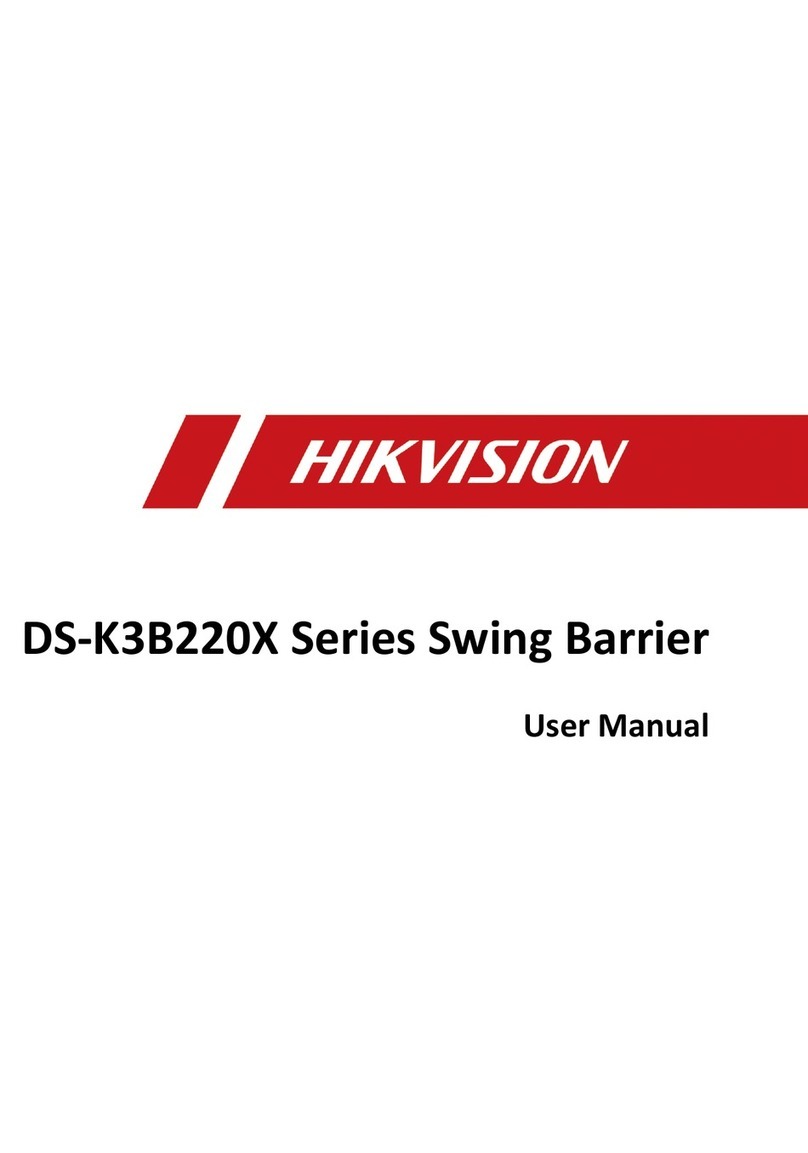
HIK VISION
HIK VISION DS-K3B220X Series user manual

HySecurity
HySecurity StrongArmPark DC 10 Programming and operations manual
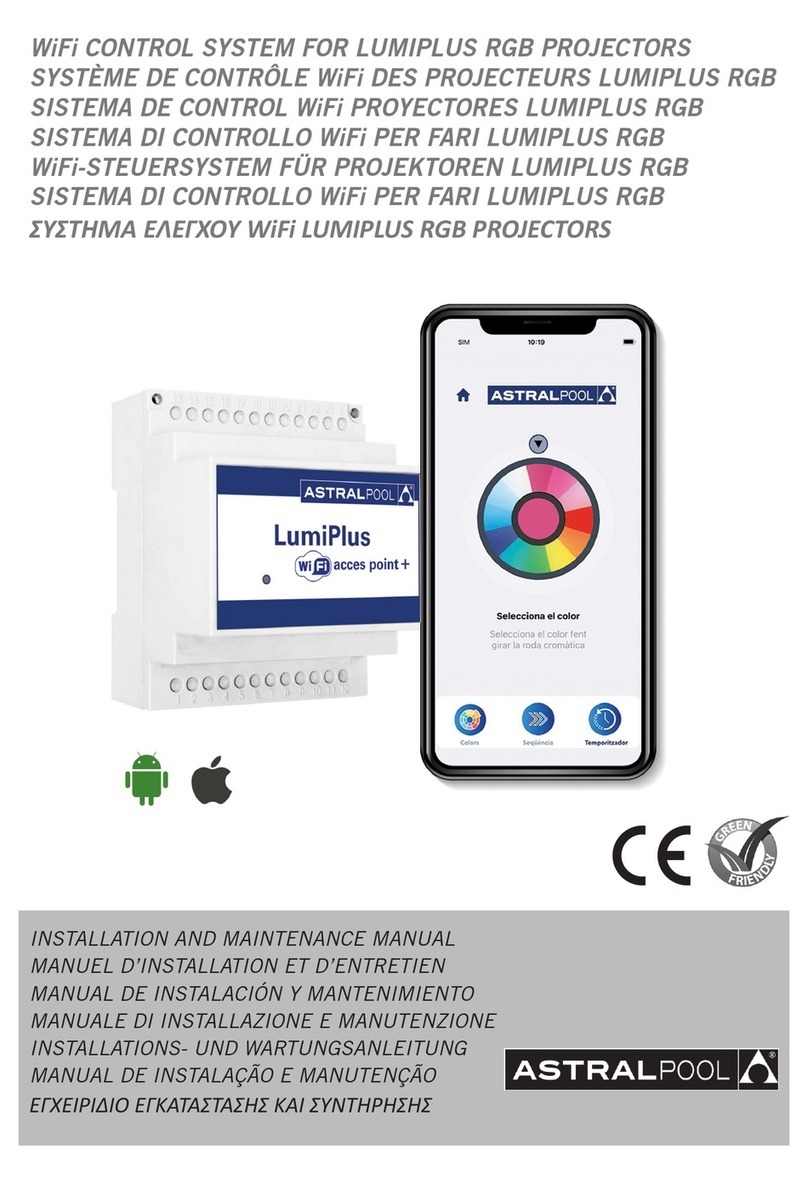
Astral Pool
Astral Pool LumiPlus 75813 Installation and maintenance manual
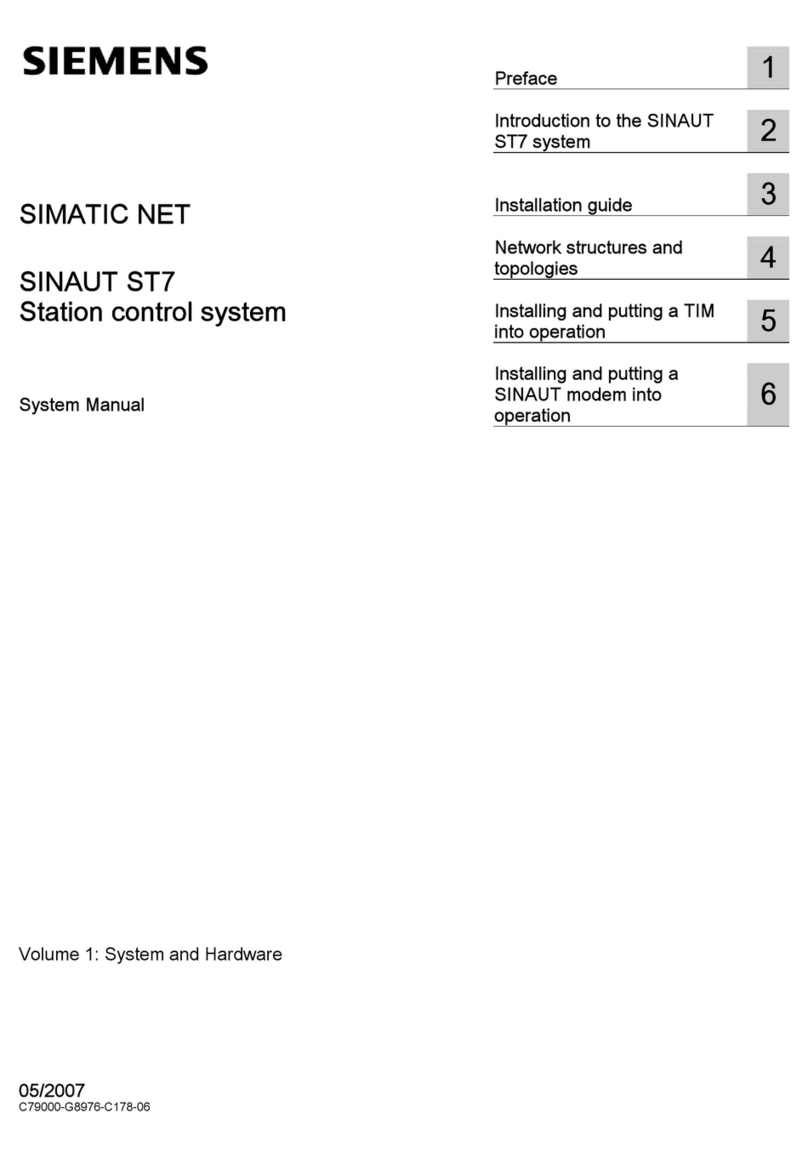
Siemens
Siemens SIMATIC NET SINAUT ST7 System manual
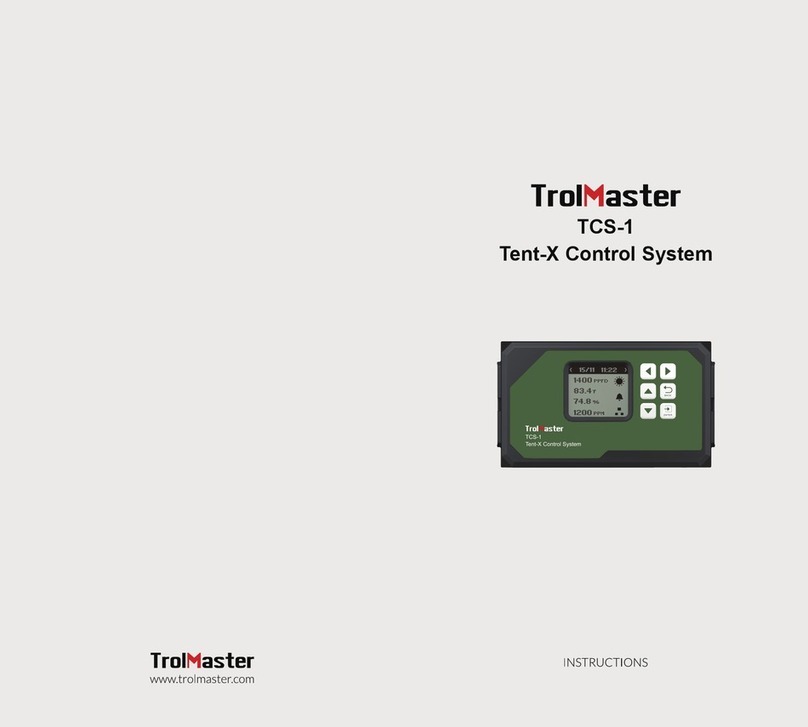
TrolMaster
TrolMaster Tent-X instructions

Linear
Linear IEI PowerKey AC 110v Installation
